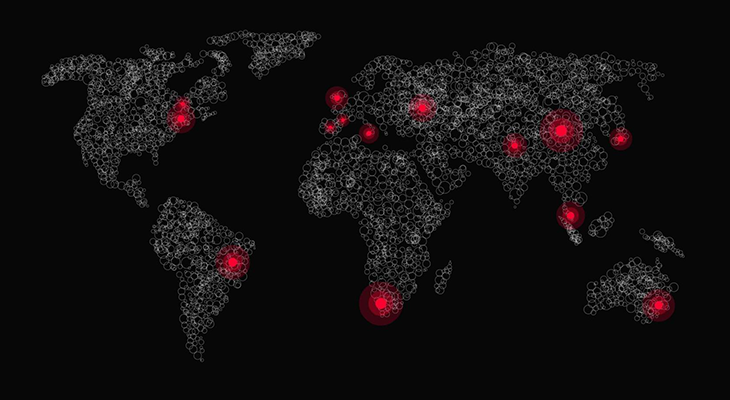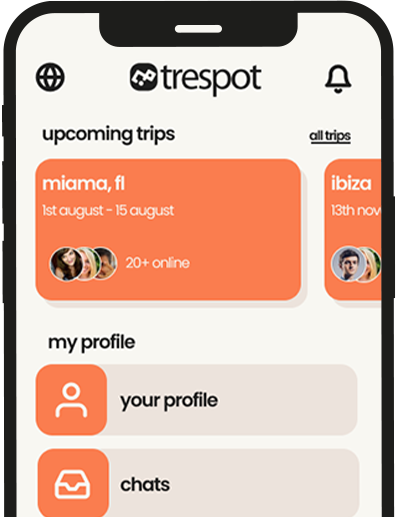Introduction: Why “Solo Trip Tips” Matter More in 2025
Solo travel is exploding: new data shows nearly a quarter of certain markets plan to go it alone in 2025, and Millennials & Gen‑Z are leading the charge. At the same time, scams have evolved, AI tools have changed how we plan, and mental wellness is now a serious part of every traveler’s kit. This guide compiles the most practical, up-to-date solo trip tips—so you can plan smarter, stay safer, spend less, and meet great people without sacrificing your freedom or spontaneity.
1) Know the Trend: Who’s Traveling Solo & Why It Matters
- 24% of Brits plan solo trips in 2025; “solo travel deals” searches are up.
- 76% of Millennials & Gen‑Z say they intend to take a solo trip this year.
- Surveys indicate women dominate many solo segments; some data suggest up to 84% of solo travelers are women.
- Motivations: freedom, post‑life‑change recovery, confidence boosting, mental reset.
Why it matters: Knowing who’s traveling solo helps you target the communities, accommodations, and safety practices that fit your profile.
2) Pick the Right First Destination (A 5‑Filter Framework)
Use these 5 filters to choose a beginner‑friendly solo destination:
- Language Comfort — English-friendly, or where you can manage basics.
- Transit Simplicity — reliable public transport & clear signage.
- Safety & Scam Profile — research common scams, solo-friendly lodging, police presence.
- Budget Fit — keep finances aligned with your comfort level.
- Community Density — hostels, tours, meetups, coworking spaces.
Pro tip: Build a “Plan B grid”: for every destination, list two cheaper/safer fallback spots you can switch to if needed.
3) Budgeting & Money Safety: Cards, FX, & “Buffer Rules”
- Two cards, two accounts: one for daily spend, one for emergencies.
- ATM & FX strategy: fee‑free banks, decline Dynamic Currency Conversion, carry a small USD/EUR stash.
- Daily cap + 10–15% buffer for oops moments (missed trains, sudden room change).
- Travel insurance that covers theft & medical is critical when you’re alone.
Unique insight: Create a “scam script”—reflex lines you use automatically, reducing cognitive load under pressure (“No thanks, I already booked”).
4) Online & On‑Ground Safety: 360° Checklist
Pre‑trip
- Share live itinerary & location with a trusted person.
- Download offline maps, emergency numbers, and translation packs.
- Photocopy IDs; store encrypted cloud backups.
On-ground
- Arrive by daylight when possible; otherwise pre‑book a transfer.
- Buy a local SIM/eSIM for constant connectivity.
- Carry a door wedge/portable lock, personal alarm, & anti-theft bag.
- Avoid real-time geotagging; post after you leave.
- Learn common scams (fake officials, taxi overcharges, friendship bracelets, fake petitions).
Unique insight: Practice confident body language—fewer people will approach you when you look sure of yourself.
5) Itinerary Design for Soloists: The “Trust Tree” Method
Three layers to reduce decision fatigue:
- Anchor layer: flights, first 2–3 nights, key permits.
- Branch layer: penciled “flex days” with backup options.
- Leaf layer: spontaneous slots fueled by local intel.
This balances structure, safety, and spontaneity—exactly what soloists need.
6) Accommodation Strategy: Hostels, Private Rooms, Co‑living, Homestays
- Hostels: cheapest, most social; look for privacy curtains, women-only dorms, strong reviews.
- Private rooms in hostels/guesthouses: privacy + social common areas.
- Co‑living/co‑working: great for digital nomads (Selina, Outsite, etc.).
- Homestays: cultural immersion & safety in numbers.
- Check‑in logistics: 24/7 reception? late fees? luggage storage?
Unique insight: Message properties to ask for the quietest room—most will help you avoid noise hotspots.
7) How to Meet People (Even If You’re Introverted)
- Free walking tours (tip-based) are the easiest social icebreaker.
- Group day tours/cooking classes/hikes offer structured time for natural bonding.
- Hostels with events (game nights, city crawls) help even introverts plug in.
- Coworking day passes if you’re remote working.
- Niche meetups: hiking clubs, photographers, salsa, language exchanges.
Pro tip: Anchor your social plans around your passions—your tribe will find you.
8) Tech Stack: Navigation, Safety, Translation, Finances
- Maps: Google Maps offline, Maps.me, Citymapper.
- Safety: bSafe, Noonlight, GeoSure.
- Translation: Google Translate (download languages), pre-built taxi/medical prompts.
- Money: Wise/Revolut, Trail Wallet/Spendee/YNAB.
- Organization: TripIt, Wanderlog, Notion.
- Community: Couchsurfing Hangouts, Meetup, Facebook solo travel groups.
Unique insight: Screenshot QR codes, tickets, and addresses—airport/hostel Wi‑Fi bottlenecks are real.
9) Packing List & Prohibited Items: Go Light, Stay Smart
- Carry-on only if you can—fewer fees, less risk.
- Wardrobe formula: 3 tops : 2 bottoms : 1 outer layer : 1 “upgrade” shoe.
- Safety kit: door wedge, portable lock, personal alarm, decoy wallet.
- Medical mini-kit: basics + electrolytes, prescriptions.
- Check airline/country prohibited lists (no surge-protected strips, certain devices, etc.).
Pro tip: Color‑code packing cubes by category—you’ll pack/unpack in minutes.
10) Food, Dining Alone & Social Comfort
- Sit at the bar—staff chats & other solo diners are common.
- Join local food tours—social + cultural education at once.
- Markets & picnics = cheap + local + social.
- Use short scripts for servers (smaller portions, outlets, etc.).
Unique insight: Journal during meals—it reframes “eating alone” into deliberate reflection time.
11) Insurance, Documents & Digital Redundancy
- Medical + evacuation coverage is non‑negotiable for solo travelers.
- Two photo ID copies (paper + encrypted cloud).
- Cloud folder with PDFs: passport, visas, insurance, prescriptions, bookings.
- Password manager + 2FA on email & banking apps.
Unique insight: Write a 1‑page “If I’m offline” guide for your trusted contact (itinerary, policy numbers, embassy, bank emergency numbers).
12) Mindset: Loneliness, Decision Fatigue & Micro‑Boundaries
- Loneliness is normal—schedule connection anchors every few days.
- Decision fatigue: automate small choices (breakfast, routines, go-to restaurants).
- Micro‑boundaries: If unsure, say no. If unsafe, spend on a taxi. No socials after 9 pm, etc.
Unique insight: Treat your energy like a budget. Allocate it to logistics, social time, exploration, and admin with intention.
13) Case Study: A ₹80,000 (≈$950) 7‑Day Solo Europe Trip—Line by Line
| Category | Budget (₹) | Notes |
|---|---|---|
| Flights | 40,000 | Deal alerts + midweek flights, shoulder season |
| Accommodation | 18,000 | 4 hostel dorm nights + 3 private hostel nights |
| Food | 9,000 | Markets, lunch specials, one paid food tour |
| Transit | 5,000 | City cards + intercity train |
| Activities | 4,000 | Free walking tours + 1 premium experience |
| SIM + Misc + Buffer | 4,000 | eSIM, laundry, emergency buffer |
| Total | 80,000 | ~₹10k buffer if flights dip |
Illustrative example—always price live for your dates.
Quick Takeaways
- Use the 5‑filter framework to pick low-stress first destinations.
- Two cards, two accounts, one emergency stash—money safety is non‑negotiable.
- Design a Trust Tree itinerary (anchor → flex → spontaneous) to kill decision fatigue.
- Join walking tours & hostel events to meet people—yes, even introverts.
- Screenshot everything (tickets, addresses) and keep encrypted backups.
- Treat your energy like a budget—set micro‑boundaries to reduce burnout.
Conclusion
Solo travel is more accessible—and smarter—than ever. With the right safety protocols, budget systems, and a layered itinerary that balances structure and freedom, you can turn “someday” into “this year.” Start small: pick a destination that passes your filters, book your first nights, set up offline maps and an emergency fund, and schedule one social anchor. Then go—because confidence comes from action, not overthinking.
When you’re back, debrief: what worked, what didn’t, where did you feel most alive? Tighten your framework and share your learnings with the community. The fastest way to get better at solo travel is to become the person who helps others get better, too. See you on the road.
FAQs - Solo Trip Tips
Pick an easy, safe, language-friendly destination; book the first 2–3 nights; get travel insurance; share your live itinerary; use walking tours and hostel events to meet people.
Learn common scams, keep backup cards, use local SIM/eSIM, arrive by day when possible, and practice “no thanks” scripts and confident body language.
Per person, yes (no cost-splitting). But hostels, free tours, public transit, and cooking some meals can keep costs low. Use daily caps and a 10–15% buffer.
Book at least one group tour or class, stay at social-but-quiet hostels or homestays, and join niche online communities that align with your interests.
Yes. Without a travel partner for backup, medical and evacuation coverage become even more important (and they’re often affordable).
References
- Solo Traveler — Planning, safety & budgeting guides
- Solo Traveler — Solo travel statistics & data
- Condor Ferries — Solo Travel Statistics
- Forbes — Travel Trends 2025: Solo Travel
- Skyscanner — Travel trends & safety sentiments
- Atlys — Solo female travel statistics (scam/theft data)
- Business Insider — Best solo travel tips
- The Guardian — Solo travel columns & trends
- Reddit r/solotravel — Community insights
- Meetup — Find local groups & events
We synthesized overlapping advice across official data reports, reputable travel publications, and large solo travel communities to create a single, practical 2025 playbook.



